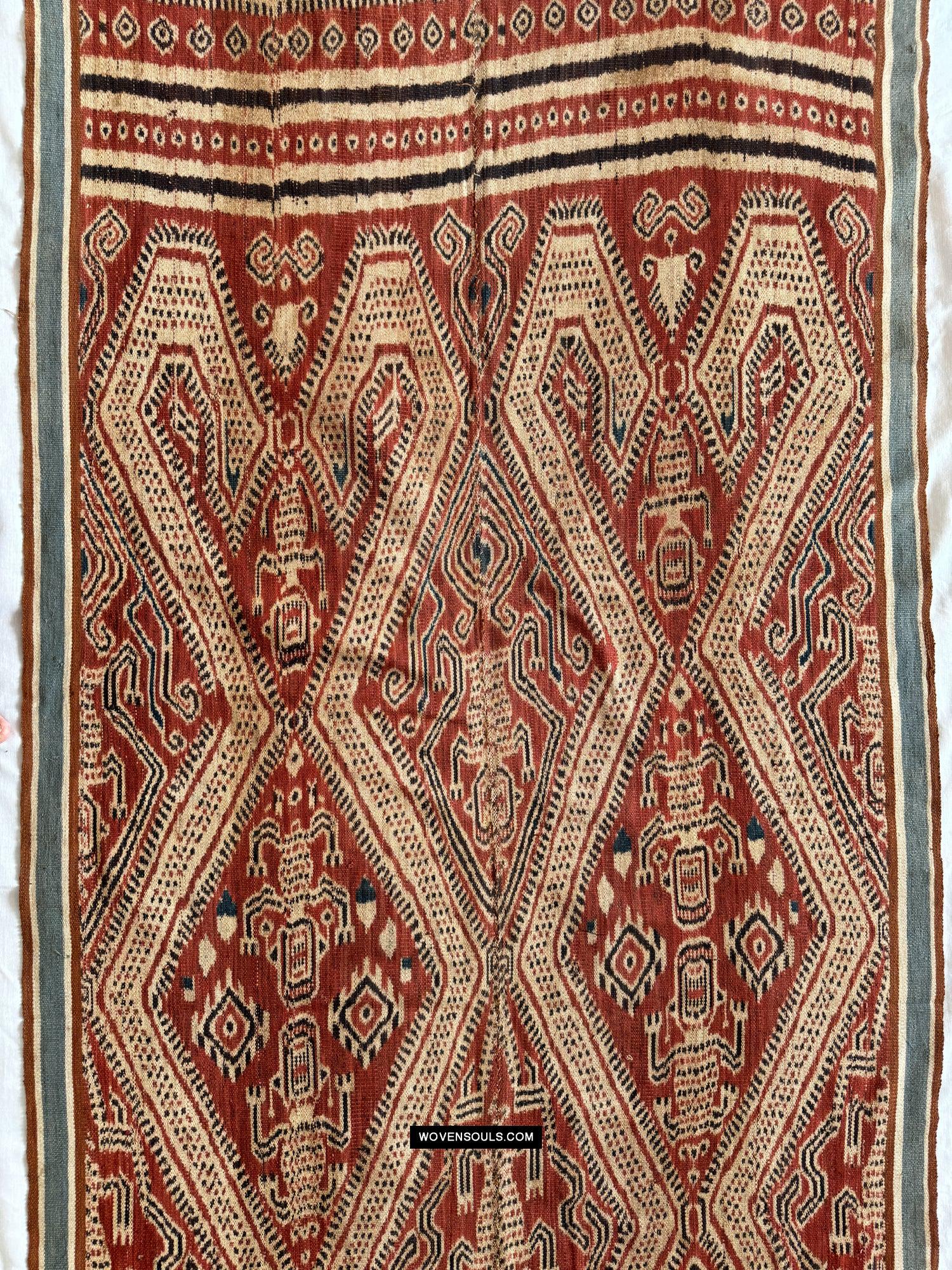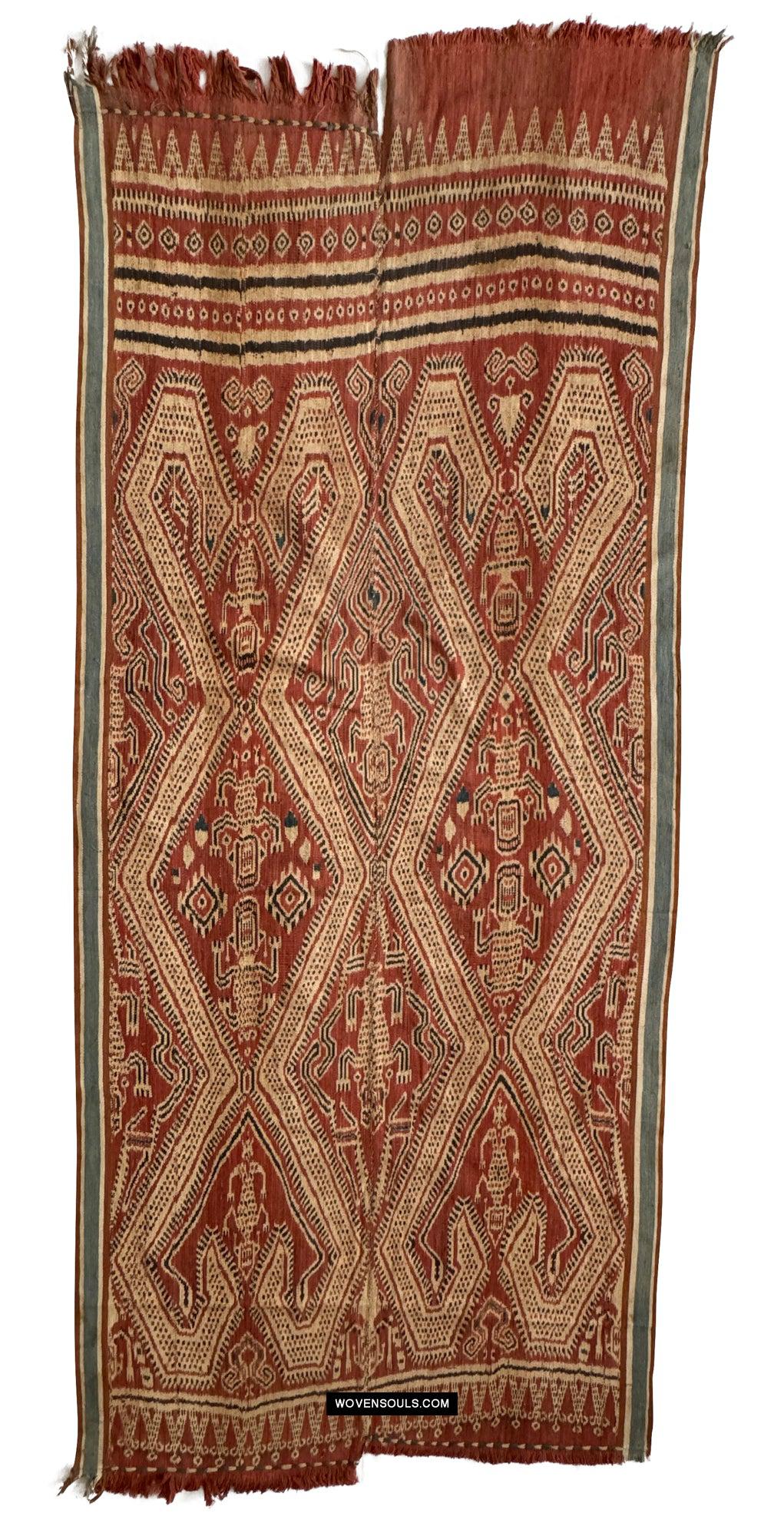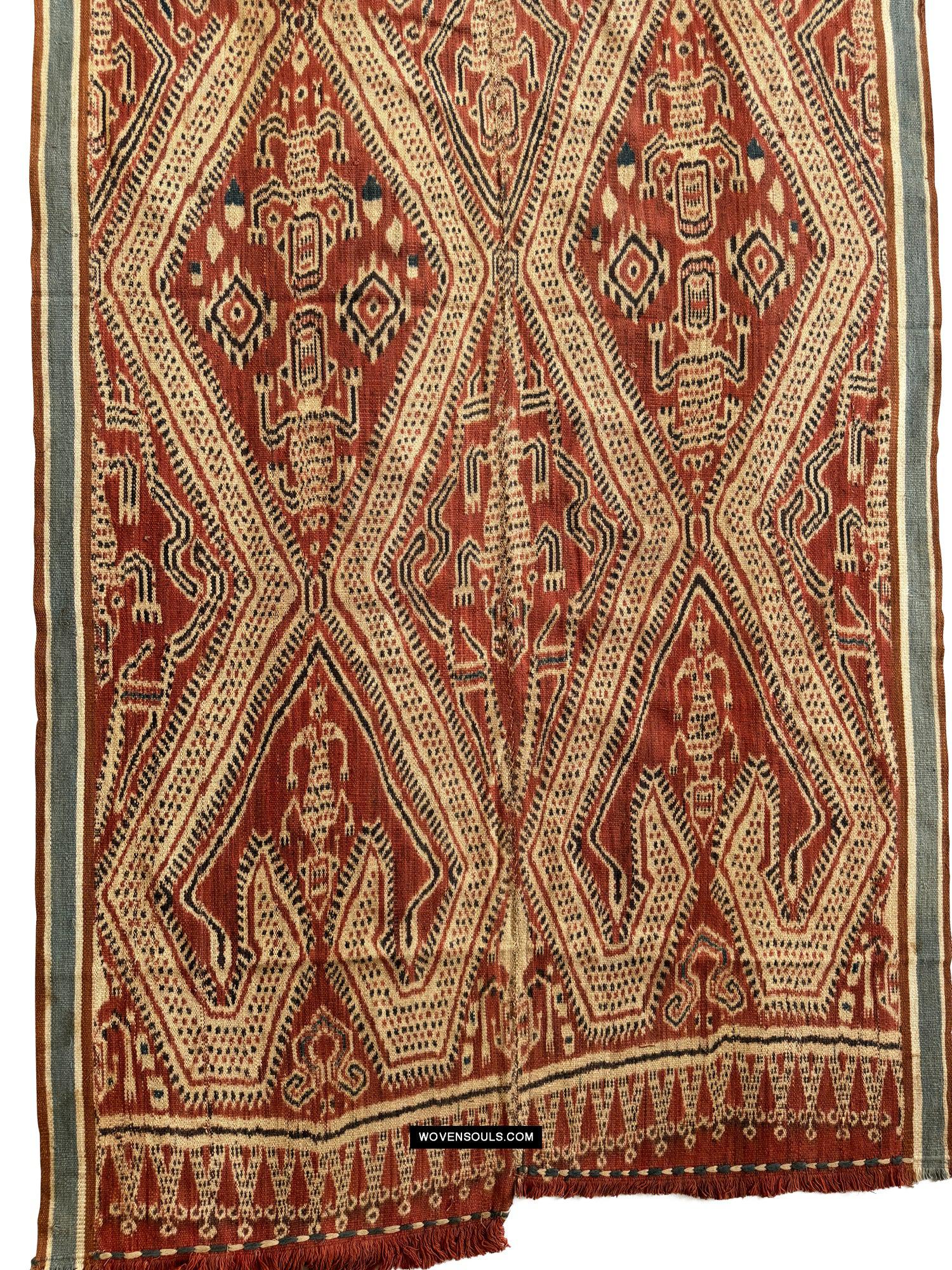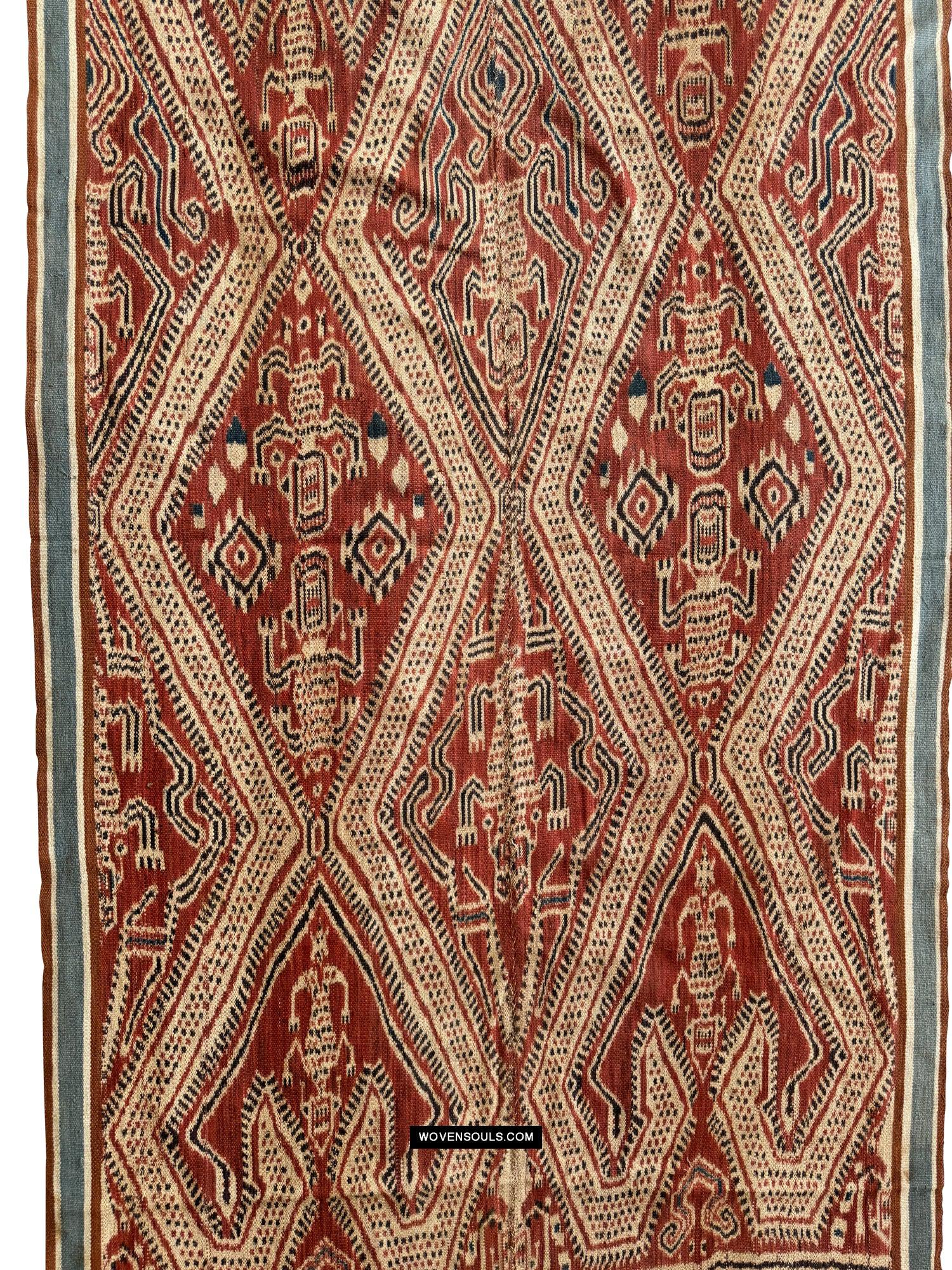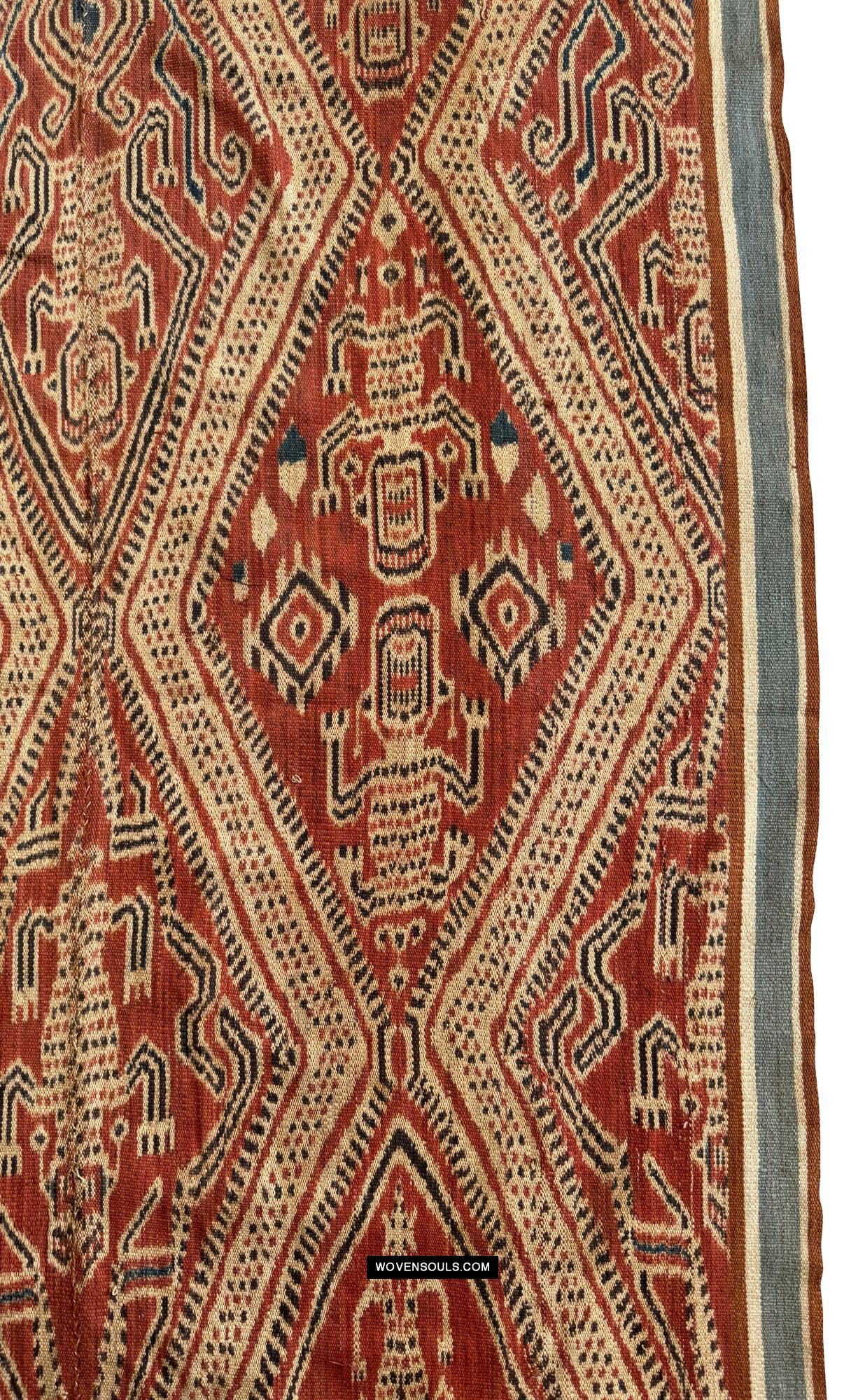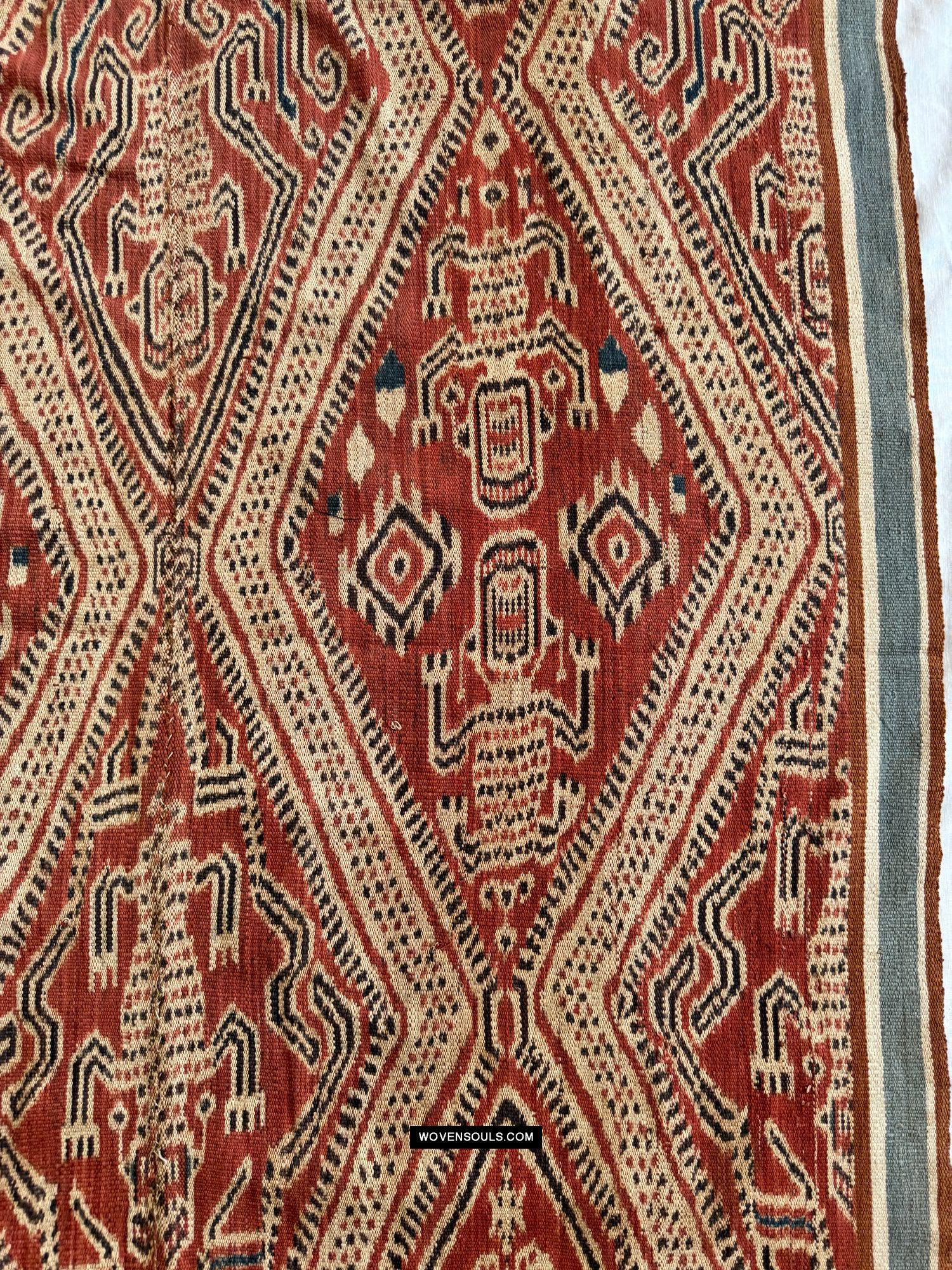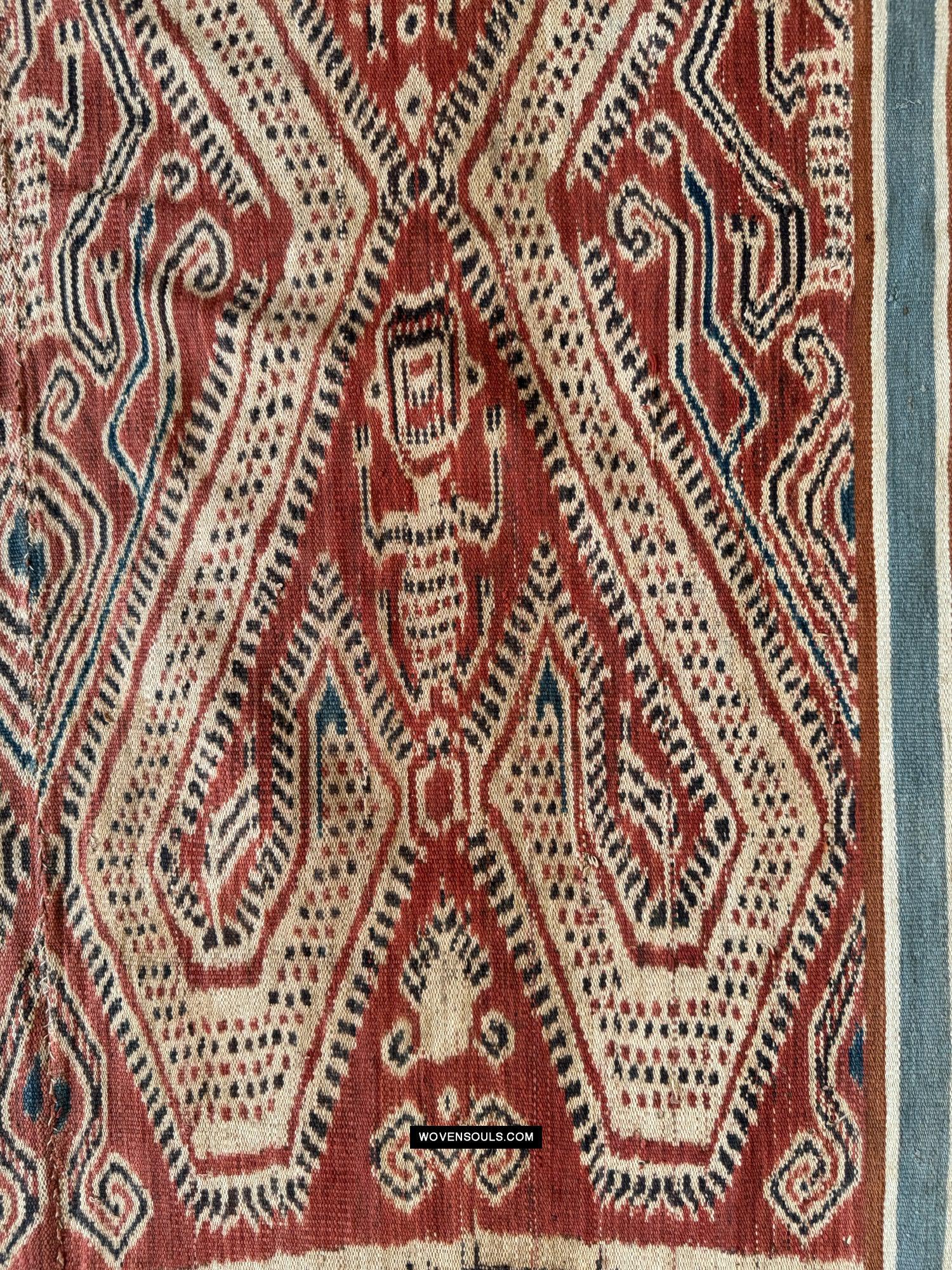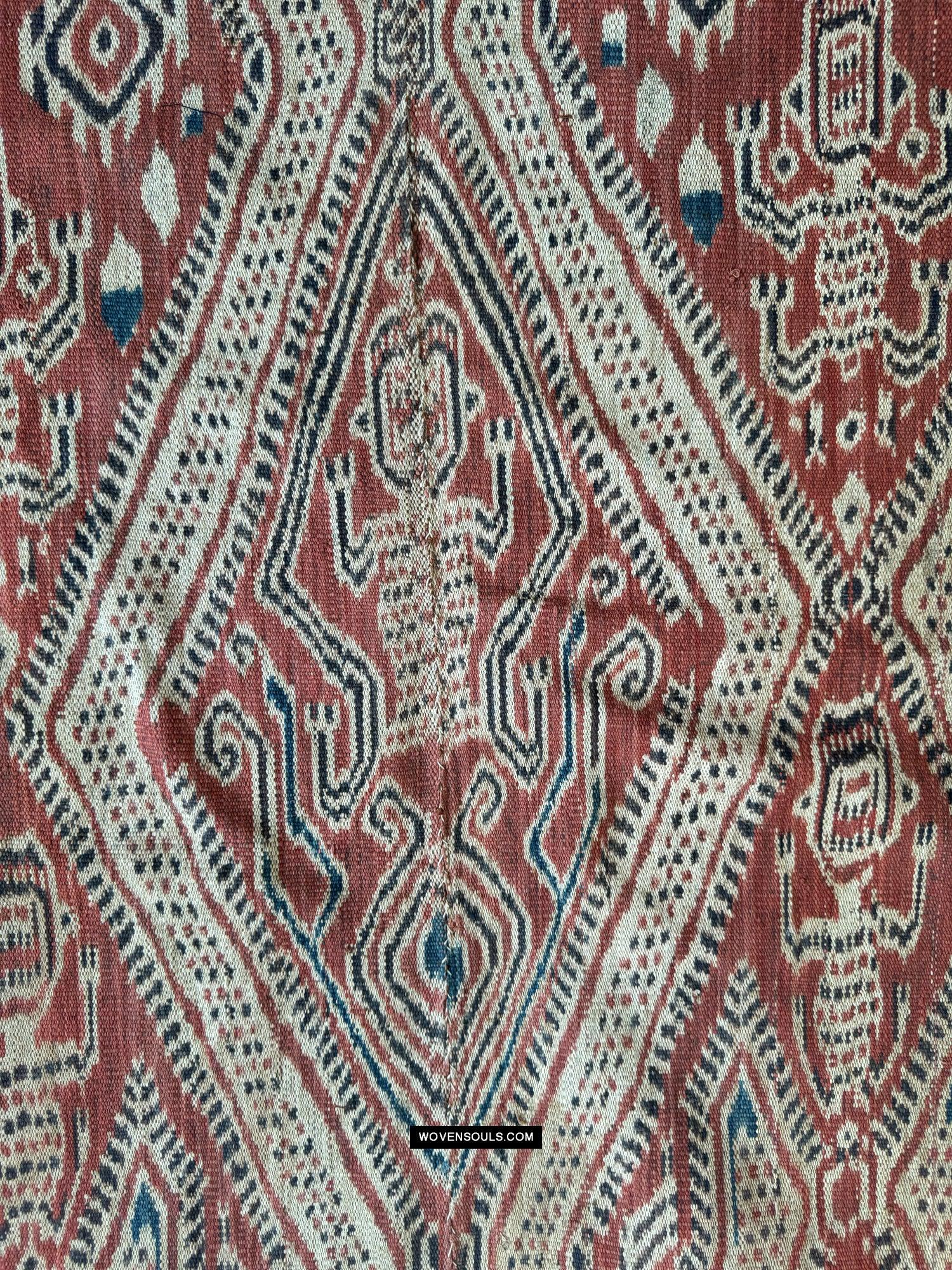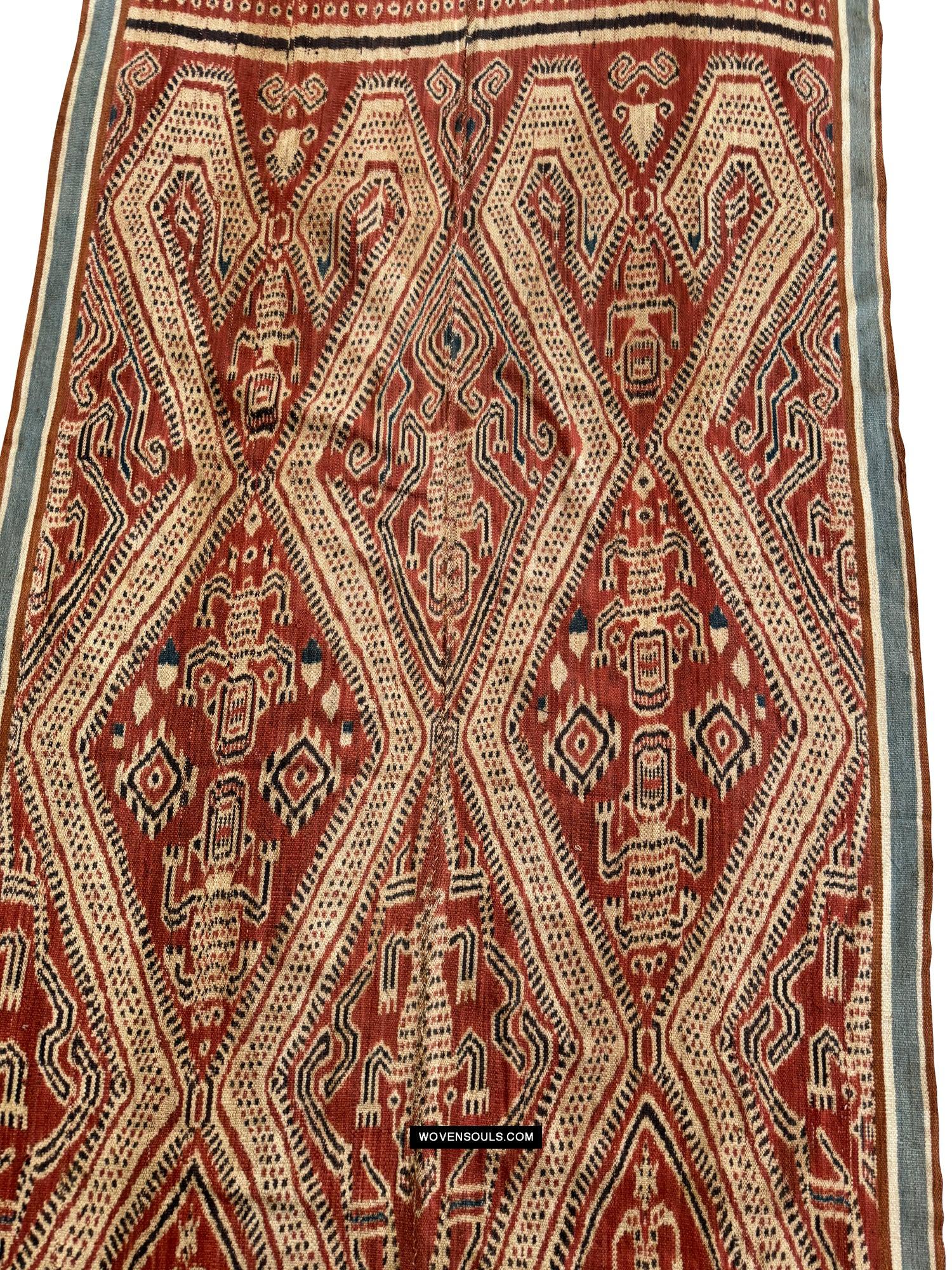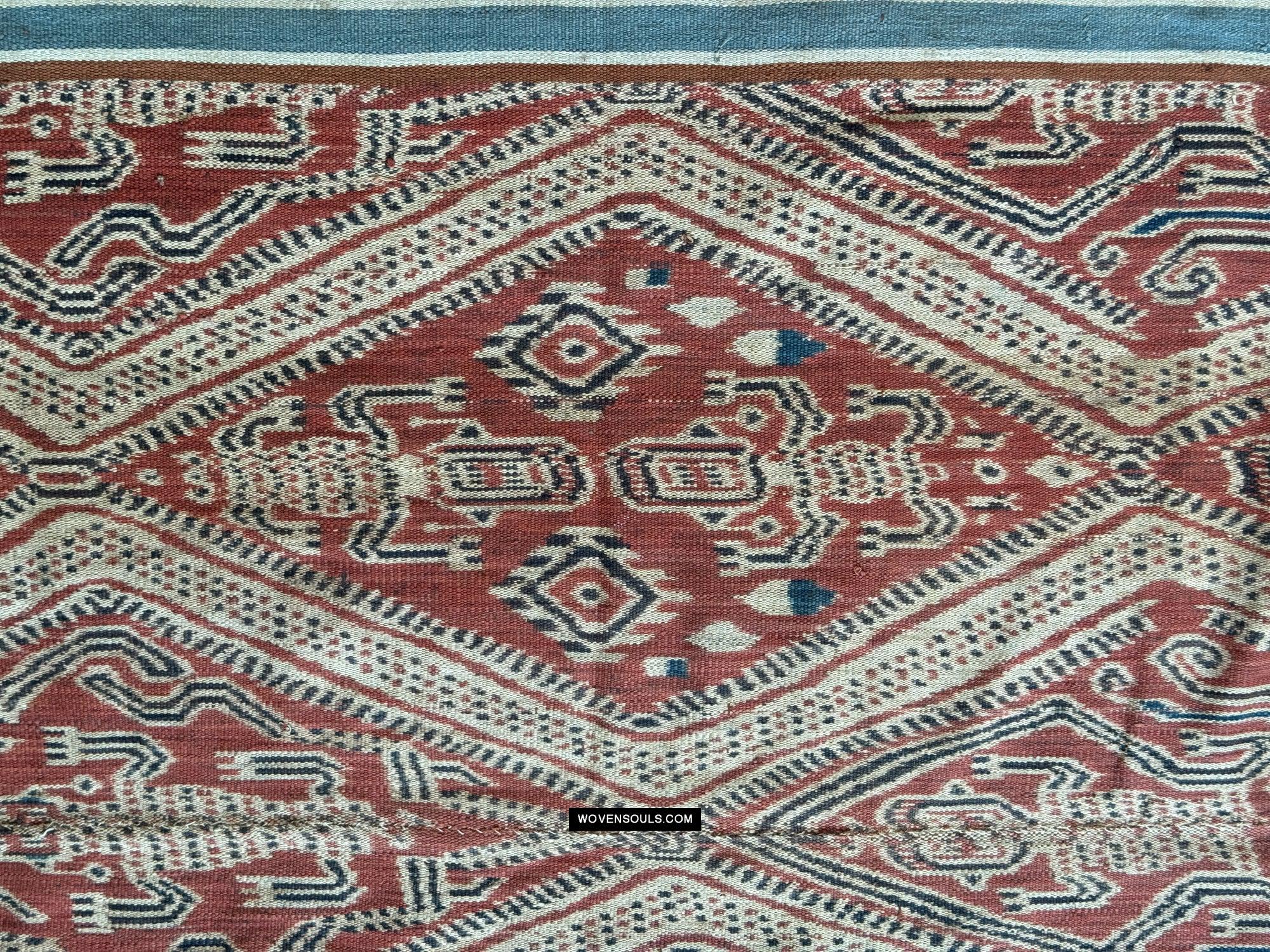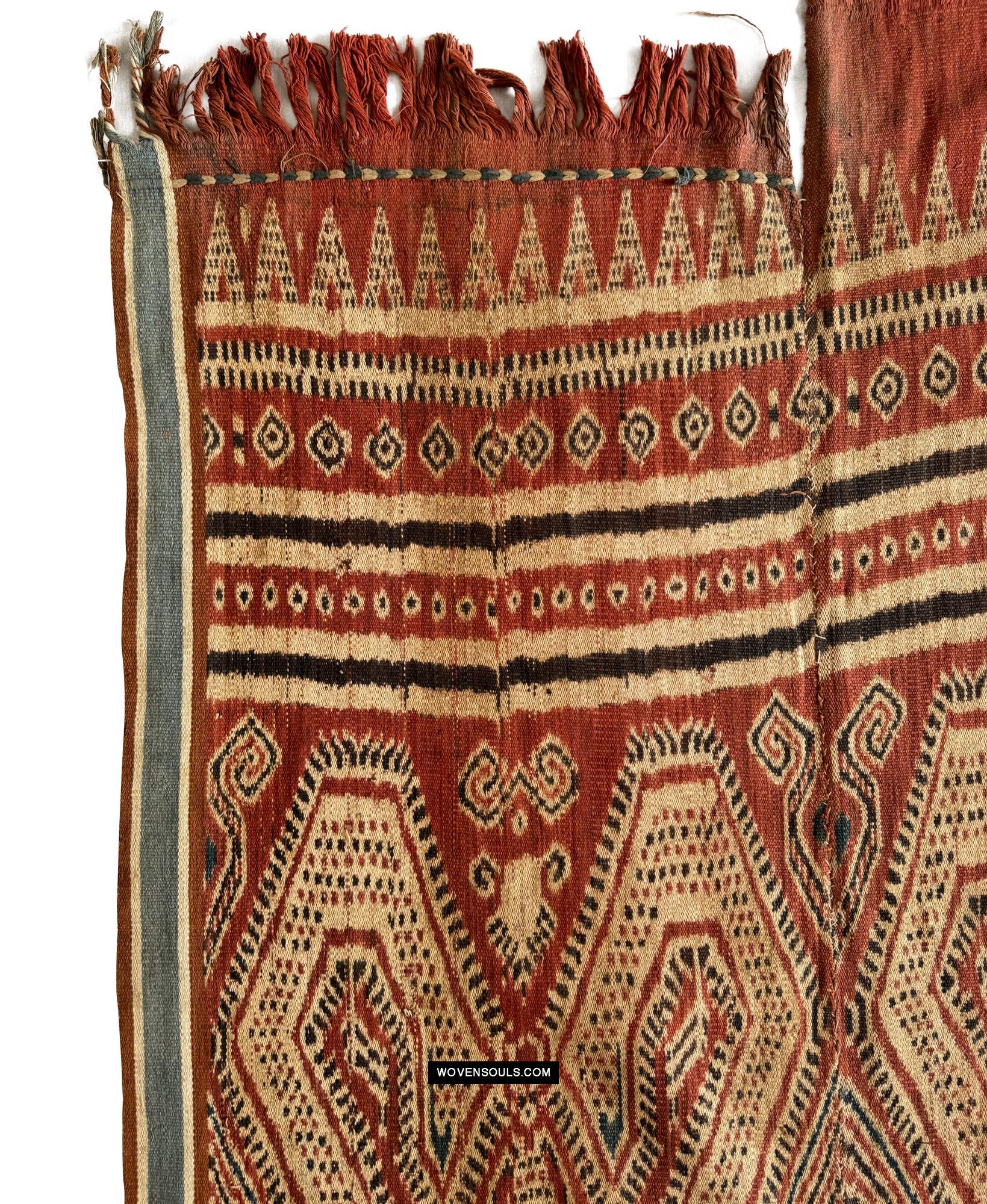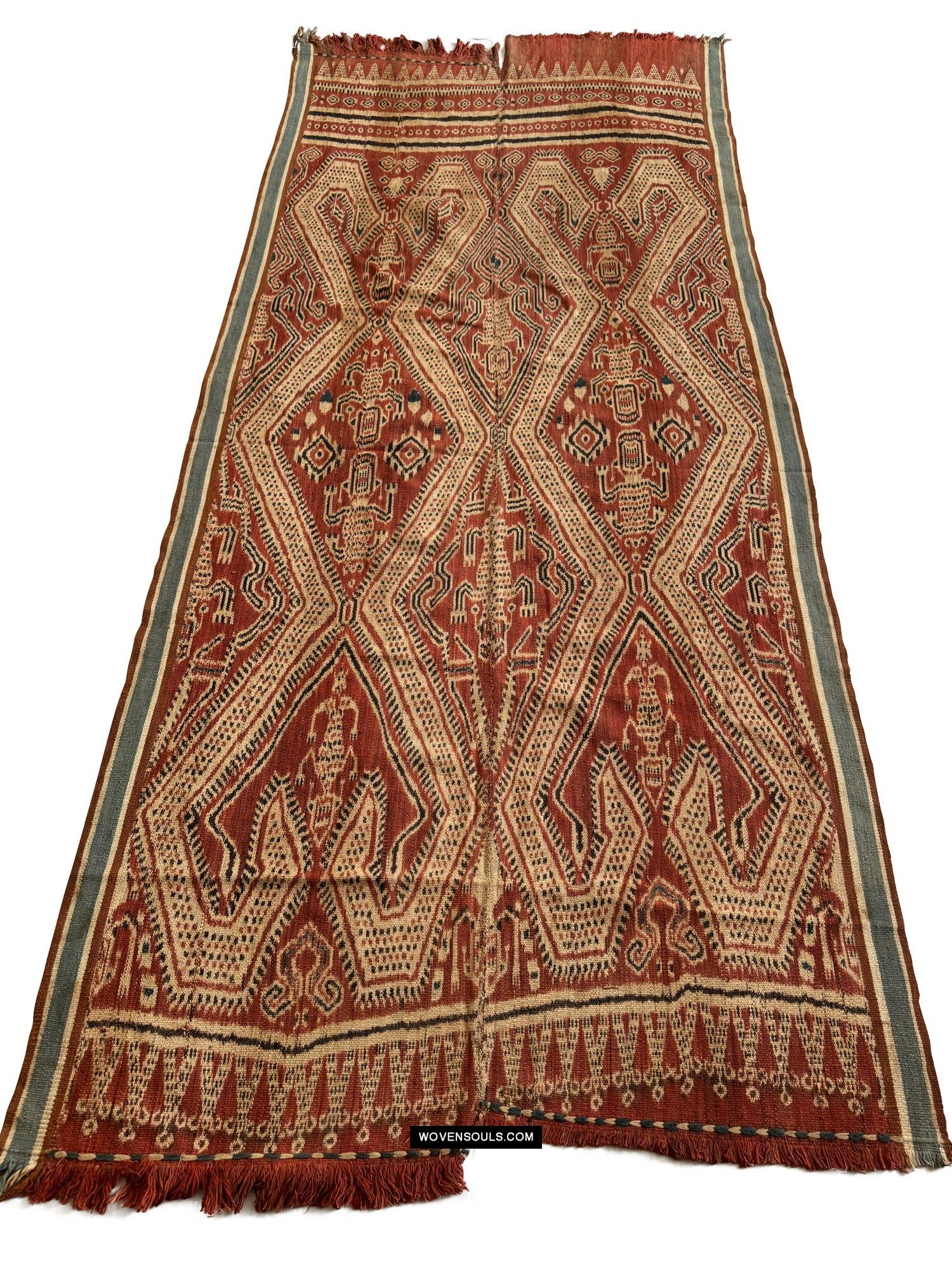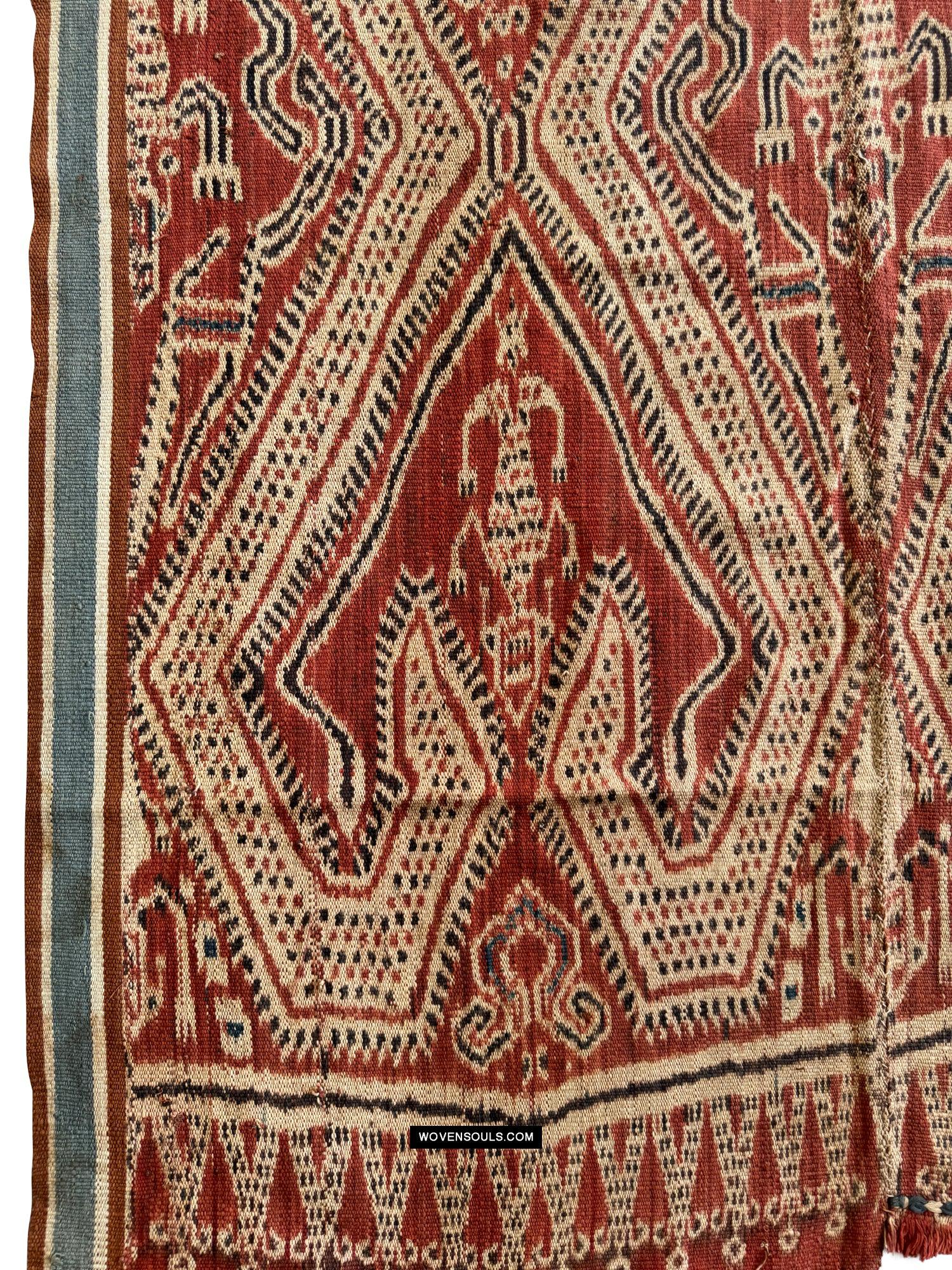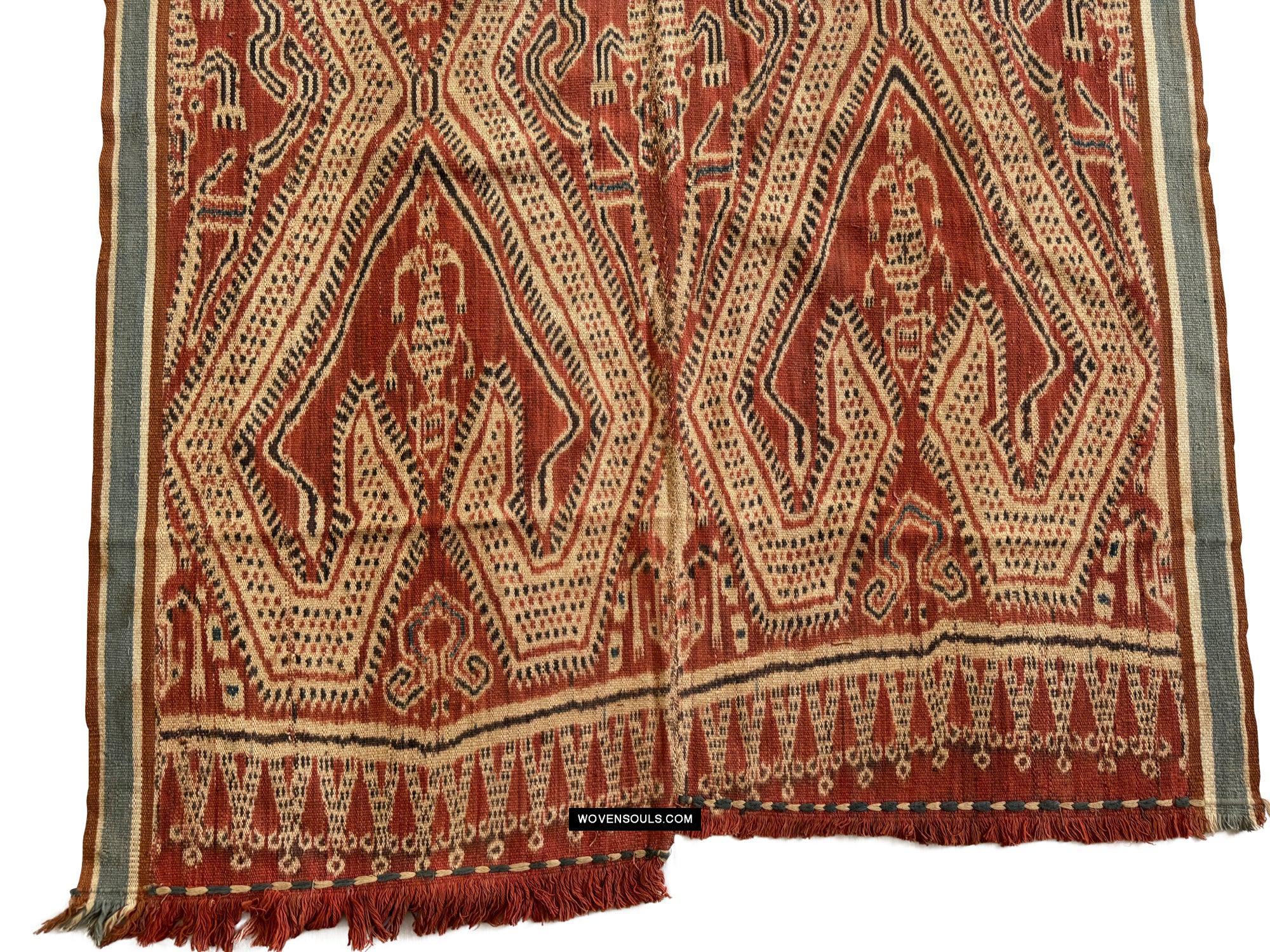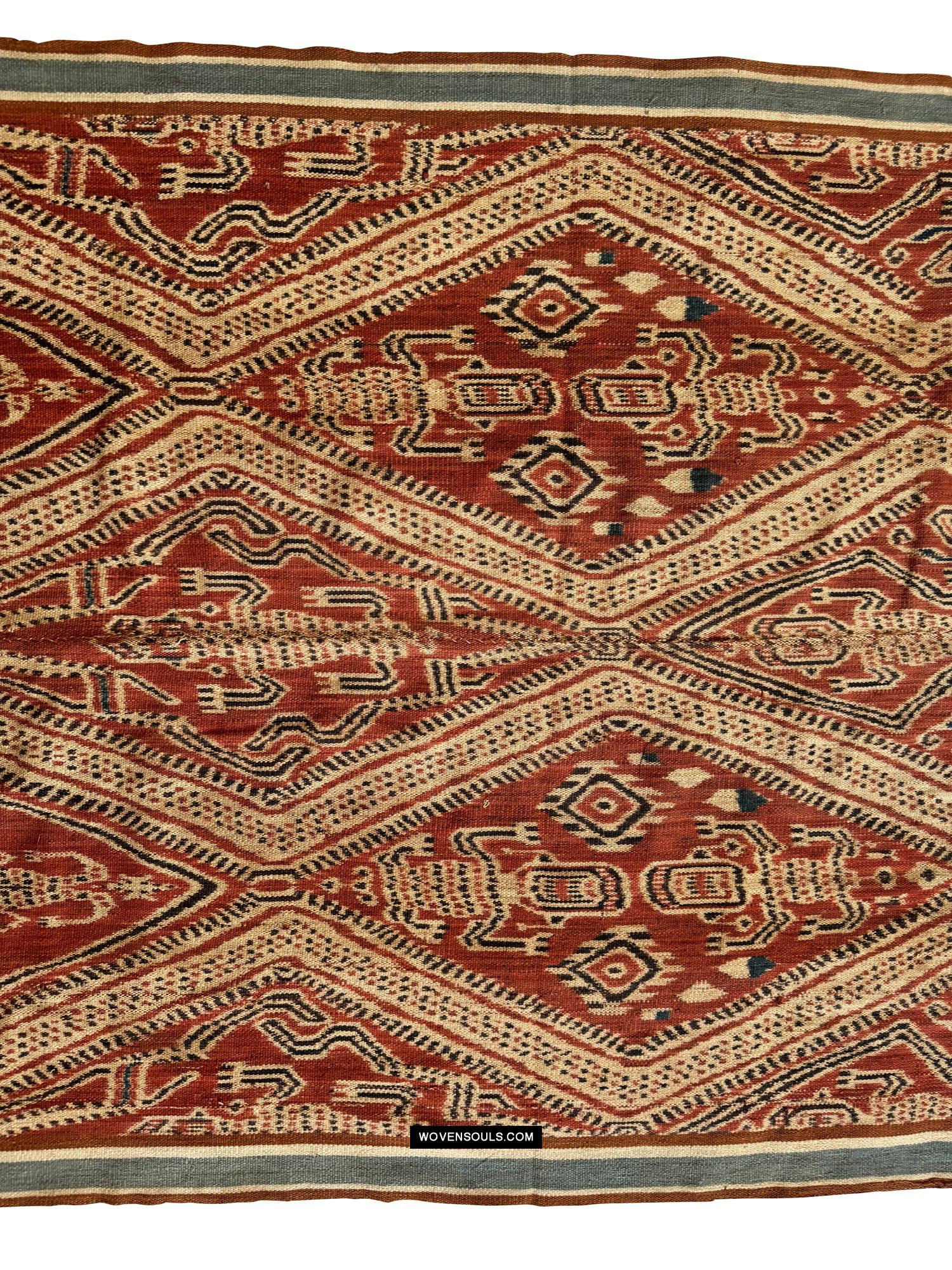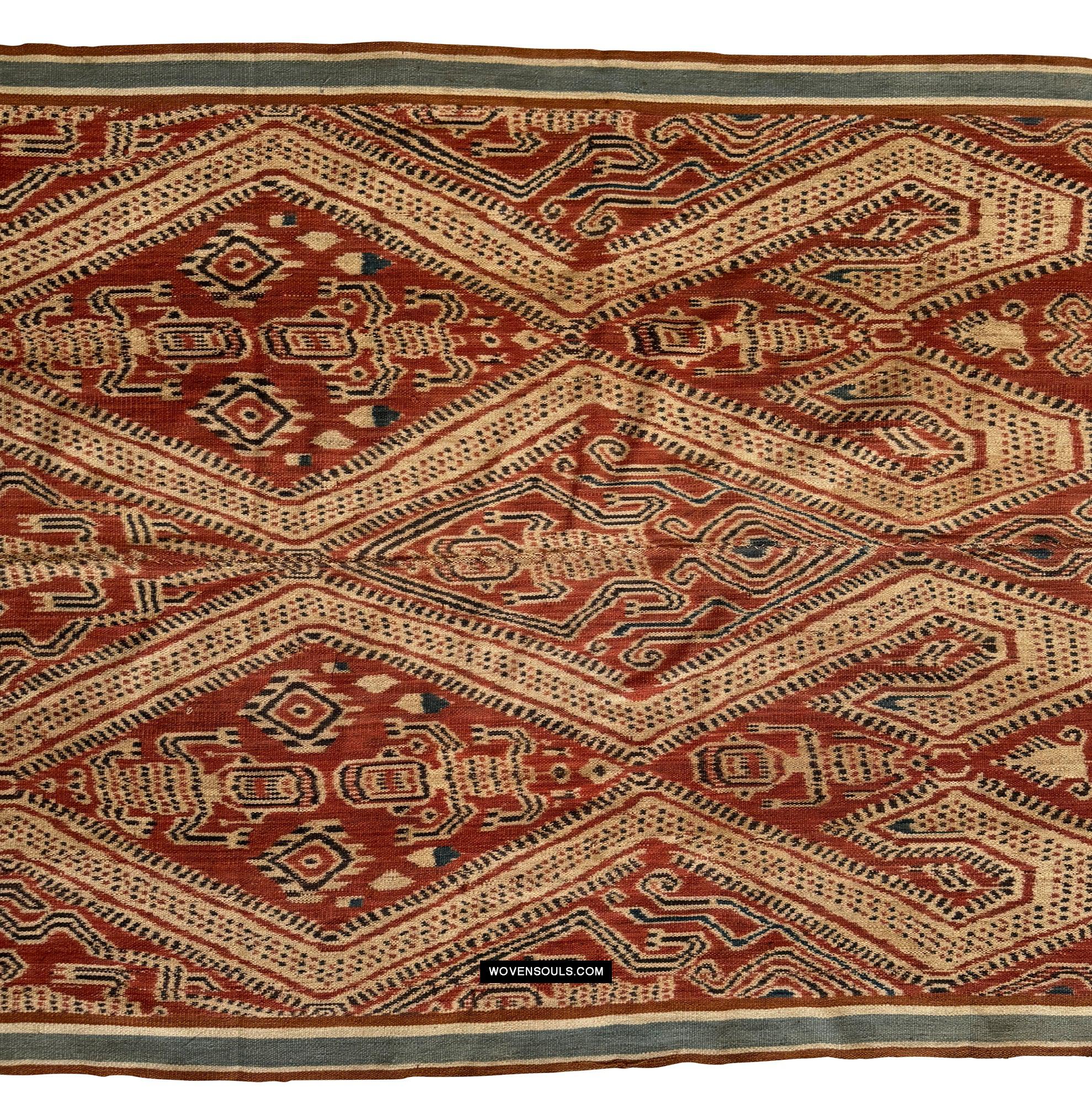1837 Antique Iban Ceremonial Ikat - Serpent
Antique Iban Ceremonial Ikat Pua Kumbu
Among the Iban, textiles are treasured as they are more than just objects made of fibre.
In some cultures, such as the Iban, textiles have played a major, if not central role, in all the ceremonies surrounding the important events in life. Power structures among women are based on dyeing and weaving skills. Perhaps the most important materials owned by families were textiles.
Ikat textiles are among the hardest to make, as the tie-dye is done on the unwoven threads before they are woven into cloth. So with a design in the weaver's imagination, the thread is dyed in sections as per the pattern that is required to be created. This takes immense precision and calculation. So when we note that these textiles were made decades ago in the rainforests of Borneo - Kalimantan, Sabah & Sarawak, there is a sense of awe for the creators.
Further, textiles themselves were believed to have the power to connect to the spirit world. The motifs, the dyes and the complexity of the weaving - all factors that were a direct result of the weaver's skill and experience - contributed to the power held by a textile.
Only textiles with certain features could be used during the most important community ceremonies and the weavers of these therefore enjoyed an elevated status of prestige.
So to study an Iban textile, requires us to focus on patterns, motifs, complexity and lastly and equally importantly - the dyes. The process of dyeing enjoys a far greater role in the value chain of production of Iban textiles than it does in any other group of textiles.
Size: 211 x 94 cm / The two halves are not perfectly aligned
MY NOTES ON THIS IKAT:
- This pattern has Serpents, Humans and Frogs
- Serpent patterns require planning of the dyed threads along the diagonal axis. This requires a visualisation of how the adjacent thread will have a specific color at a point just a little higher than the previous one - and so on. So executing this pattern requires great skill.
- Serpents patterned with rows of tiny black dots alternating with rows of tiny rust dots.
- In creating Ikat, to have the black contained within a tiny area and not spillover into adjacent areas is itself a remarkable feat. So creating distinct rows of black and white dots is difficult.
- Note the circles at the end of the textile. While oblique lines are a challenge, curved lines require a far higher level of genius to plan the tie-ing of the threads prior to dyeing.
- Note the multiple horizontal bands at the top and bottom of the cloth. The top has seven bands in white & black while the bottom has three. The weaver was clearing enjoying practicing her amazingly high level of expertise in ikat weaving!
- Appealing Background Red, black, off white and a little blue
- Note the fabulous blue vertical borders.
CLICK TO SEE THE COMPLETE COLLECTION OF IKAT PUA KUMBU
This item has spent a lifetime being used for the purpose of its creation with the original artist/user. Signs of this life lived heartily may be present on the piece in the form of stains, thread loss, loose threads, holes, tears, color run and other imperfections. Therefore the condition must be assumed to be “not” perfect. More photos of such imperfections will be provided on request.
***

